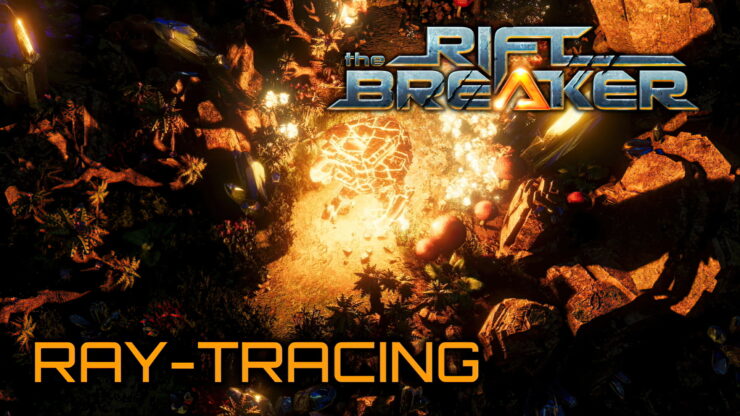Polish indie developer EXOR Studios is about to publish its third game, The Riftbreaker, as a simultaneous release on both PC and consoles. Just like X-Morph: Defense, this is a twin-stick shooter set in a sci-fi world, and it’s also powered by the in-house Schmetterling engine.
The Riftbreaker promises to be a technical showcase, as per our previous interview. It’ll be the first isometric game with ray tracing (on PC and next-gen consoles, albeit with some differences) support and it also includes AMD FidelityFX Super Resolution support (again, on both PC and consoles).
Just ahead of tomorrow’s launch, we had the chance to chat with COO Paweł Lekki for a brief technical interview to inquire further about the implementations of AMD FSR and ray tracing, to ask whether there are any plans to add NVIDIA DLSS support, and more still.
What is your favorite aspect of AMD’s FidelityFX Super Resolution, after working with it?
It works on practically any GPU that can run The Riftbreaker. The people that need this feature the most are the ones with underpowered GPUs. It can easily make the difference of playing at 30FPS vs 60FPS. I think it’s a game changer for a lot of people. It also works out of the box on consoles. It’s super lightweight and super easy to implement. There’s a lot of things to like about it.
Is there anything you’d like AMD to improve from their side in future updates?
Image quality at sub 1080p resolutions could be improved.
How important was AMD FSR to reach 60 FPS on consoles with The Riftbreaker? Do you agree that it’s a must for consoles?
It was a must for us to reach 60FPS at 4K with raytracing enabled on the Xbox Series X and the PS5. We also use it to reach 4K at 60FPS on the Xbox Series S. It’s not a must for consoles but I think it’s very useful. One more aspect to take into account is that image degradation vs performance plays a different role on consoles than on PC. Console players usually play on large displays 3 feet or even 6 feet away. Fluid gameplay is much more important in such cases than pixel-perfect imagery.
Are you planning to add NVIDIA DLSS to the PC version of The Riftbreaker, too? If not, why?
We don’t have such plans at the moment. We would rather invest our time in other technologies that can be accessed by all of our players.
Why did you opt to only use ray traced shadows in the next-gen versions of the game, whereas the PC version also features ray traced ambient occlusion?
Ray traced ambient occlusion was costing us a few additional milliseconds that were making the difference between going above or below 60FPS in many gameplay situations. We might optimise this further in the future and enable this feature on consoles at a later time.
Is there any difference between the quality of ray traced shadows on PC and PS5/Xbox Series X? Also, what about between PS5 and Xbox Series X?
The PC version has a few quality presets that can be configured depending on a user’s GPU power. Both console versions use the Medium quality preset.
Does the Xbox Series S support ray traced shadows in The Riftbreaker? Other than that, are there any other tradeoffs compared to Xbox Series X and PS5?
No, the Xbox Series S version uses standard shadow mapped shadows. There are no other differences except that.
Will the DualSense controller features be supported on PC, too, as is the case with several recent games?
Yes, we support DualSense Adaptive Triggers natively through Sony’s PC SDK. Haptic Feedback features are not available due to the SDK’s limitations.
Thank you for your time.

